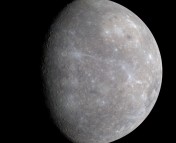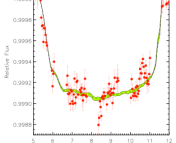Title: Asteroid rotation periods from the Palomar Transient Factory survey
Authors: D. Polishook, E. O. Ofek, A. Waszczak, S. R. Kulkarni, A. Gal-Yam, O. Aharonson, R. Laher, J. Surace, C. Klein, J. Bloom, N. Brosch, D. Prialnik, C. Grillmair et al.
First Author’s Institution: Benoziyo Center for Astrophysics, Weizmann Institute of Science, Israel
Determination of the rotation periods of asteroids has a number of applications. When considering an asteroid individually, it can help one to understand the physical properties of an individual asteroid, including its shape and whether or not it’s a binary. In a statistical sense, the rotations of the entire population of asteroids can help one to understand the physical processes that govern asteroid rotation. The two mechanisms that influence an asteroid’s rotatation are collisions and something called the YORP effect, in which photons from the Sun are actually able to accelerate asteroids through absorption and re-emission. There’s a nice discussion of this type of science which includes a description of the YORP effect in this Cornell press release, while this Discovery news story reports on the first direct detection of the YORP effect (which combines the initials of four different people).*

This shows one field from the Palomar Transient Factory. Grey dots are background sources and the colored dots are detected asteroids. Fig. 1 from the paper.
Currently there are 3,700 asteroids with measured rotation periods; using the Palomar Transient Factory, these authors aim to eventually measure rotation periods for 10,000 asteroids. (PTF also finds supernovae, see for example this discovery). In this paper, Polishook et al. report on the identification of 624 asteroids in the PTF survey, 20% of which are new discoveries, and 88 new rotation period measurements. All of the asteroids identified belong to the main asteroid belt. The smallest asteroids that can be detected in the inner parts of the main belt are several hundred meters across and in the outer main belt, a kilometer across.
Asteroid science comes from the high cadence part of the PTF survey, in which a field is sampled 20 times a night. Identifying asteroids in these fields involves 1) matching observed sources to catalogs in order to identify stationary sources such as stars and galaxies, 2) removing spurious signals like cosmic rays and diffraction spikes from saturated stars, and 3) identifying moving targets, which are potentially asteroids. Since asteroids move rather quickly, they show up as “tracks” across successive images, allowing them to be identified.
The authors then create a light curve for each object, showing how its brightness changes with time. They then fit a Fourier series with period (P) to the data. Testing periods from the minimum to maximum detectable (something between 20 minutes and 80 hours is typical) results in a best-fitting model, which includes a best-fitting period. Some light curves and period solutions are rejected, such as those light curves with few data points or those that have multiple solutions. For most objects, only a minimum period can be determined. Finally, the sizes of the asteroids can be estimated to within a factor of 2 using the observed magnitude and distance and by assuming an albedo (reflectance) for each asteroid.

Data for four asteroids: the time in hours is on the x-axis and magnitude (brightness) is on the y-axis. These asteroids show clear photometric modulation and have good period measurements. The different markers indicate different observation dates. Fig. 6 from the paper.
*The three articles reporting the first and very early YORP discoveries:
Lowry et al. 2007
Taylor et al. 2007
Kaasalainen et al. 2007





Trackbacks/Pingbacks